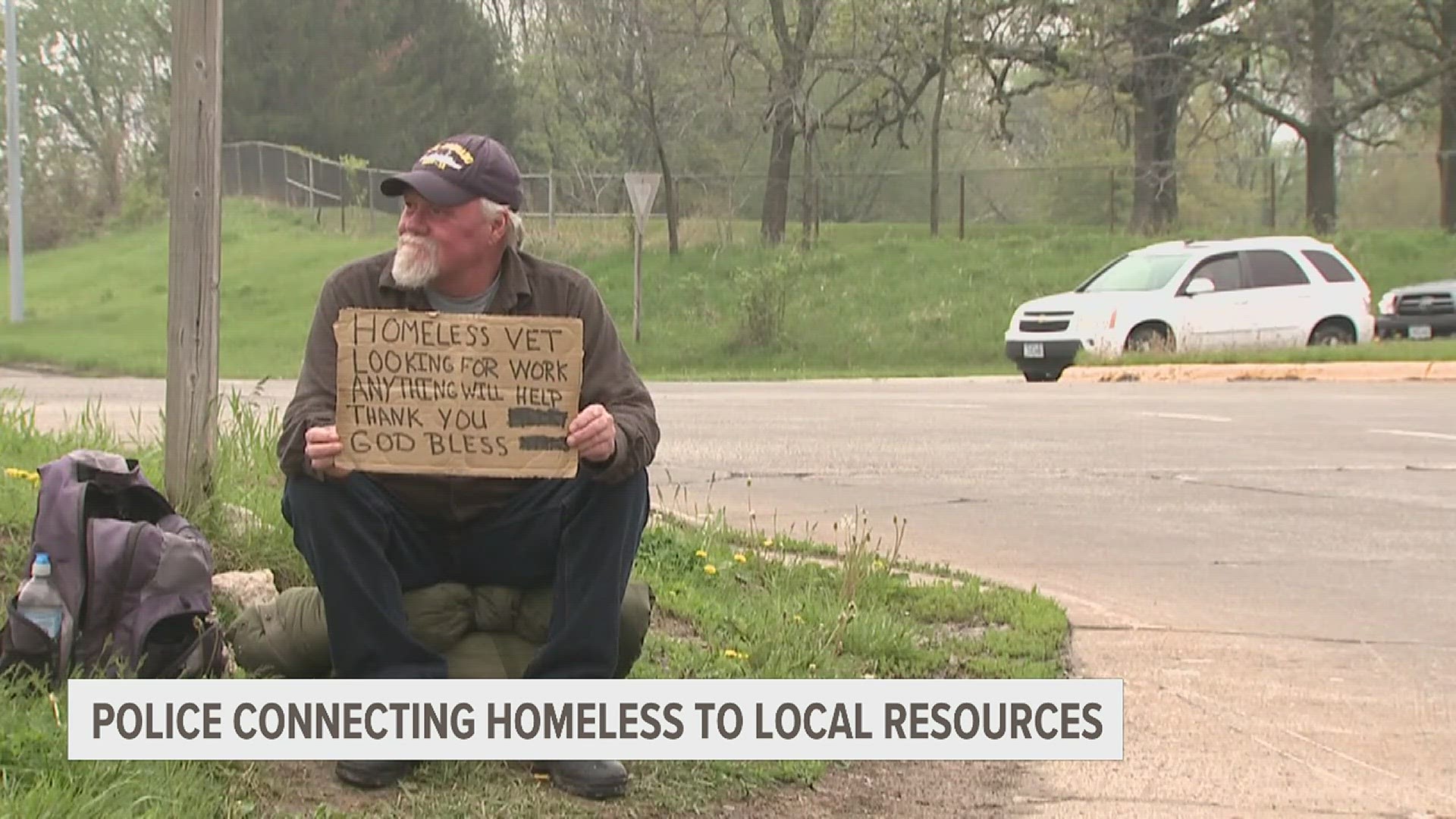MOLINE, Ill. — Over 300 Quad Citizens are unhoused, with over 10,000 people experiencing homelessness in the state of Illinois any given day, according to the Illinois State Police. In addition, around 30,000 Illinoisians are estimated to use homelessness resources during the course of a year.
In an effort to help serve unhoused individuals in their communities, the Illinois State Police (ISP) has released its first-ever guidebook for law enforcement officers on homelessness.
The Illinois Law Enforcement Response to Homelessness Guidebook was created through a joint effort between state police, local police departments and Project Now, a local group working to help people meet basic needs and achieve self-sufficiency.
“Law enforcement officers respond to all types of emergencies and social-service related calls among all populations, including people experiencing homelessness,” ISP Director Brendan F. Kelly said in a press release. “Because of these interactions, officers are in a position to provide information about resources and programs available in communities, and help connect individuals to longer-term solutions to prevent and end homelessness.”
According to the ISP's new guidebook, homeless service systems throughout the country utilize numerous best practices for assisting those experiencing homelessness. These practices are applied throughout the guidebook to better serve the unhoused population. They are as follows:
- Prevention: This includes short-term financial assistance and assistance in eviction court to help keep people out of shelters and off of the streets.
- Low-barrier shelter: Some shelters have requirements to allow people to stay there, which can leave those struggling with addiction without anywhere to go. Creating shelters with lower barriers will provide more opportunities for people to find temporary housing options, according to the guidebook.
- Short and long-term rental assistance with services: Also known as rapid rehousing, transitional housing or supportive housing, these services give people a place to live and help make sure people are staying housed.
- Outreach and engagement: For those who are living outside or inconsistently living in shelters, outreach and engagement give them the resources to find necessary services.
- Coordinated entry: This practice provides people with fair access to housing and includes a referral process to homeless-dedicated housing programs.
- Harm reduction: This approach does not require sobriety but rather focuses on making choices that "promote stability and growth and are demonstrated to reduce substance use over time," according to ISP's guidebook.
Project Now said that this guide will help officers provide information about resources and programs within the community. It's all in an effort to help prevent and end homelessness.
"When someone doesn't know who to call, typically they're calling law enforcement," Project NOW Community Services Director Ron Lund said. "We need to give them the tools so they're successful and then they can go back to doing what they're actually paid to do: law enforcement."
The new Illinois Law Enforcement Response to Homelessness Guidebook can be read in its entirety here.
Watch more news, weather and sports on News 8's YouTube channel

